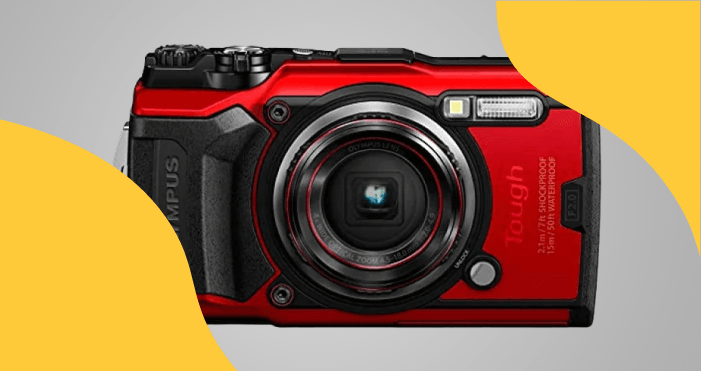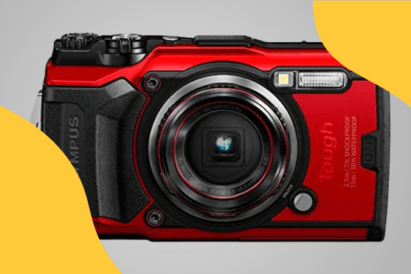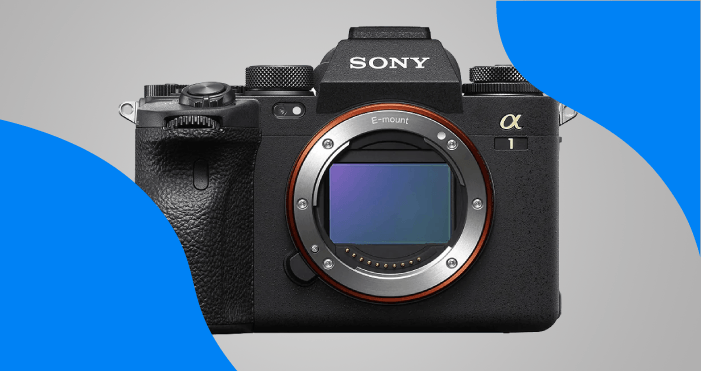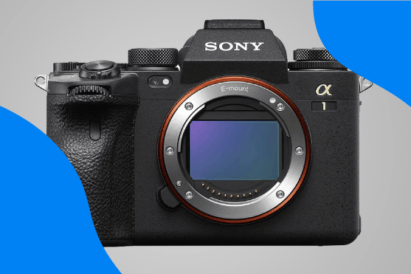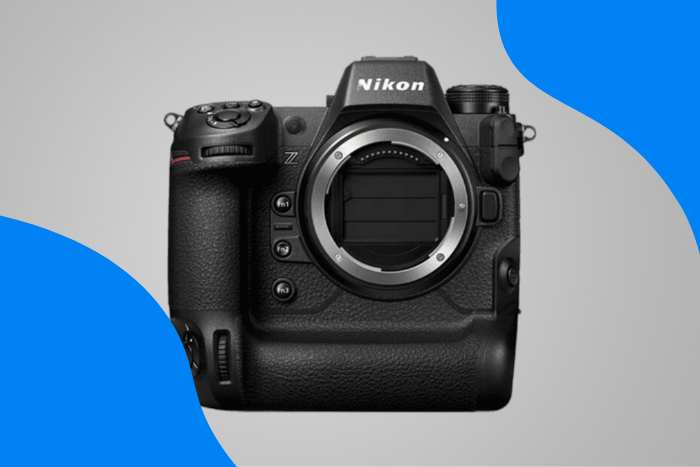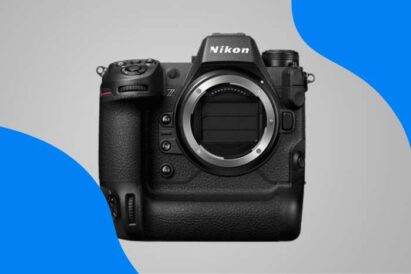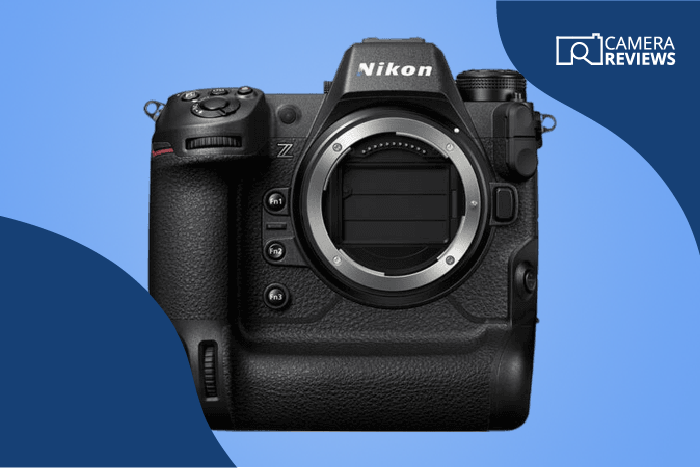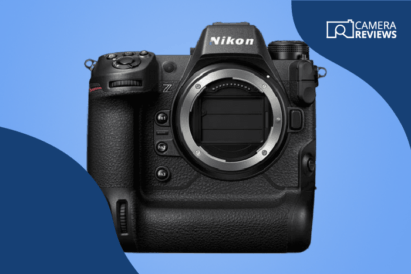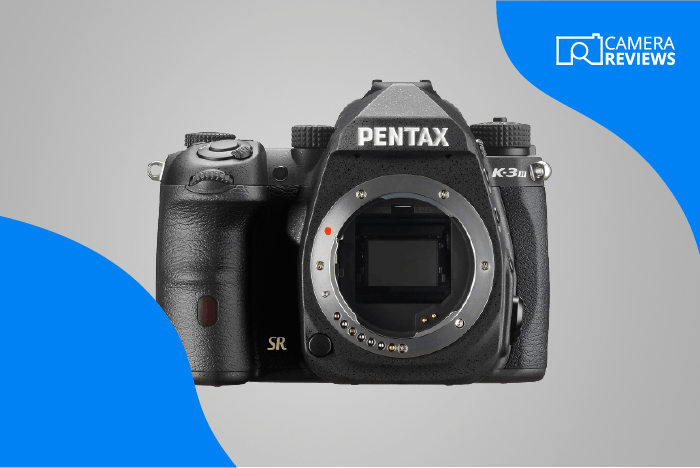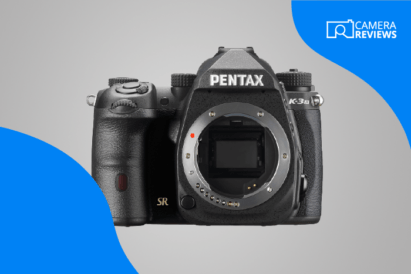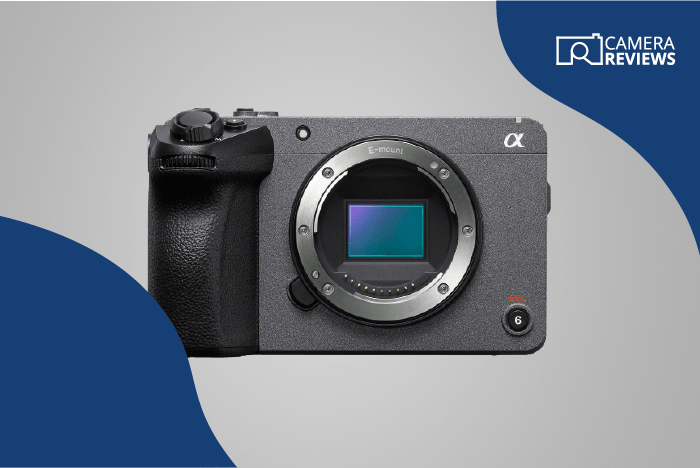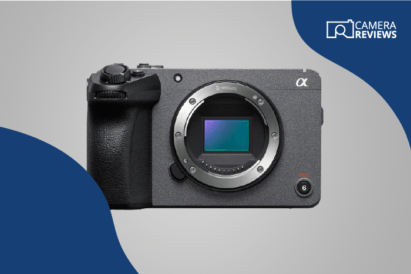What are the best cameras for amateur photographers these days? This is a tough one. Partly because the phrase “amateur photographer” is such a loaded one. When I stopped teaching and started calling myself a “photographer,” guess what? My photography didn’t improve one bit. So I’m not giving the word “amateur” any negative side.
But having considered all the options, I’ve chosen the Sony a6100 as our Top Camera in this category.
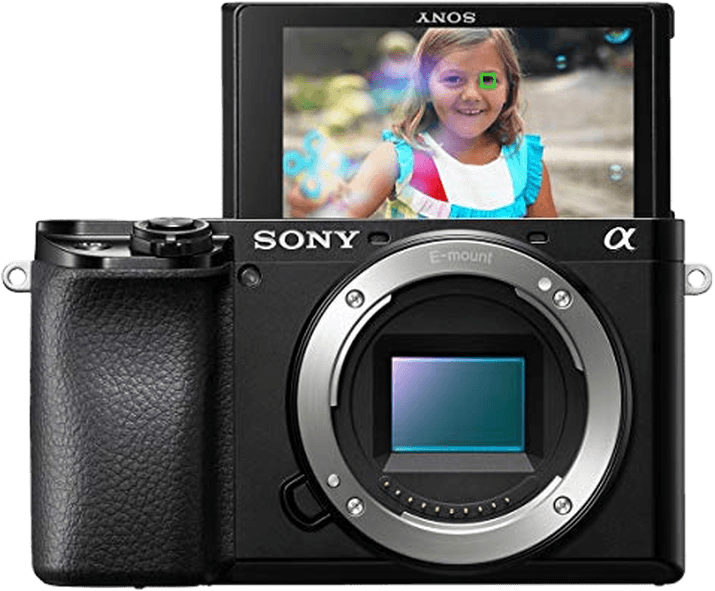
Sony a6100
At the end of this review, you’ll find some things to think about when choosing the best camera for you. There are many things to consider, but it’s an exciting choice to make.
What is the Best Camera for Amateur Photographers?
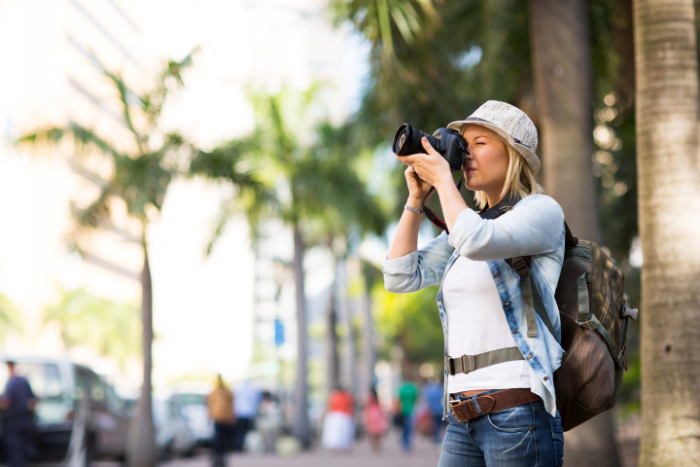
I’ll never forget the first proper hobby camera I bought. I hope that as we dive into this review, you’ll find yours!

- Great price and compact size
- Human and animal eye autofocus
- Flip-out touchscreen is helpful for selfies and vlogging
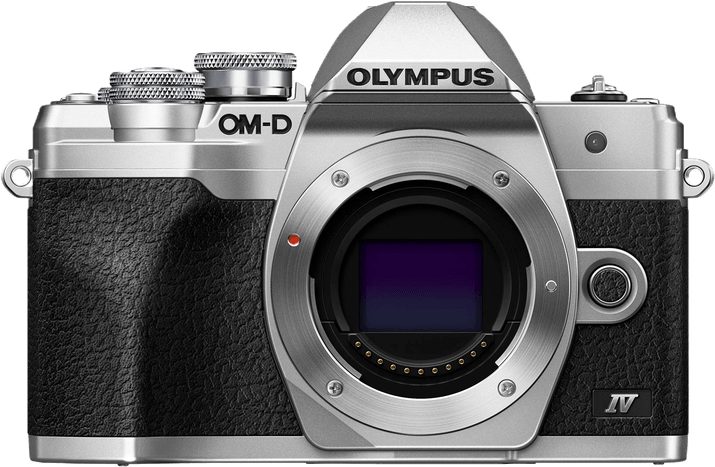
- Excellent image quality
- Endless list of compatible lenses
- Excellent 4K video features
- Nice Price
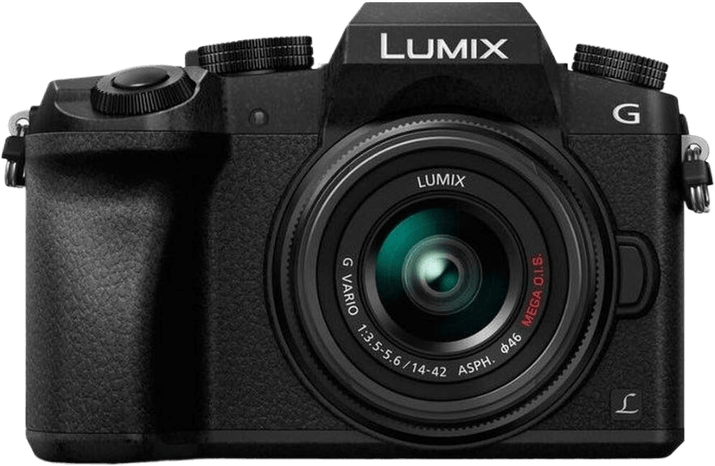
- Excellent 4K video and stills
- A fast and accurate autofocus
- Helpful focus peaking and zebra highlight warnings
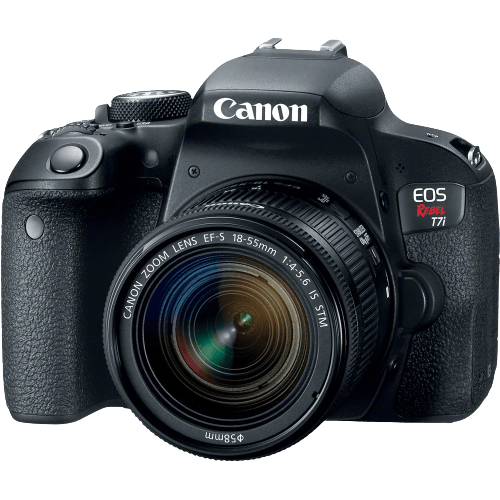
- Excellent image quality for APS-C
- Good 45-point AF tracking coverage
- Convenient touchscreen controls
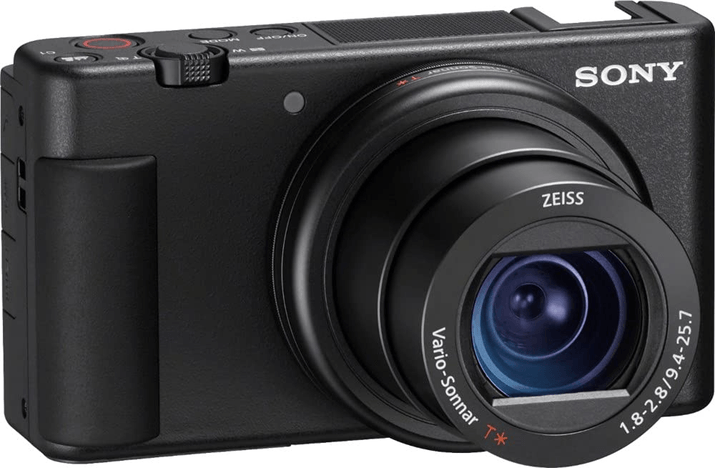
- Compact body
- Excellent eye-recognition AF
- Rotating screen and viewfinder
- Has a forward directional mic
- Additional external mic port
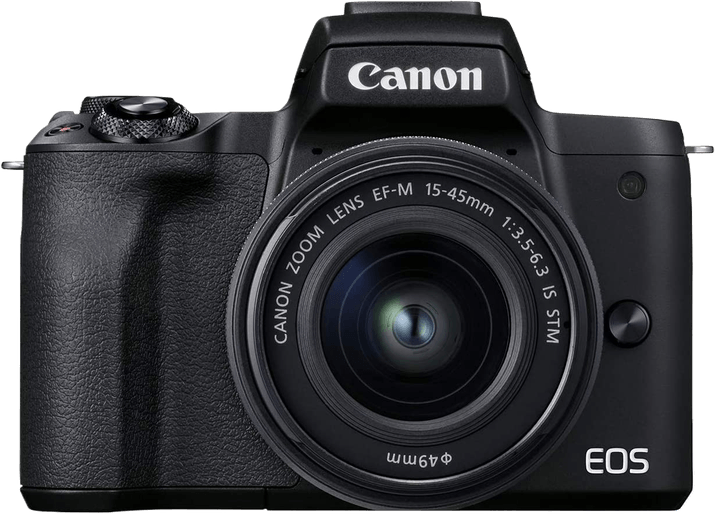
- Strong sensor resolution
- 4K and Full HD video options
- Time-lapse recording
- External mic port
- Webcam functionality
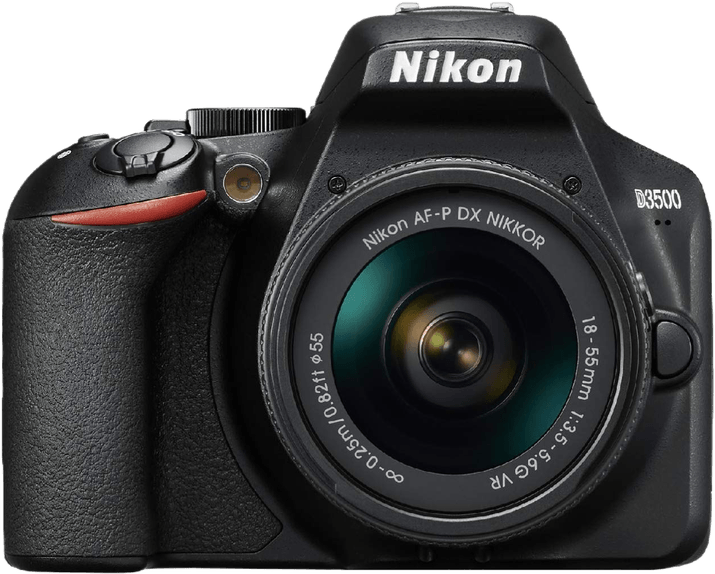
- Excellent image quality
- Guide mode for beginners
- Easy to use and wide functionality
- Long battery life
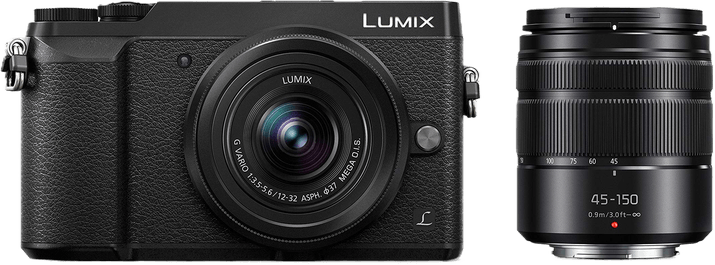
- Customizable face-detection autofocus
- Intelligent 5-axis image stabilization uses lens data for super-sharp images
- Programmed focus tracking via touchscreen
- Customizable on-screen buttons
- Excellent 4K video quality
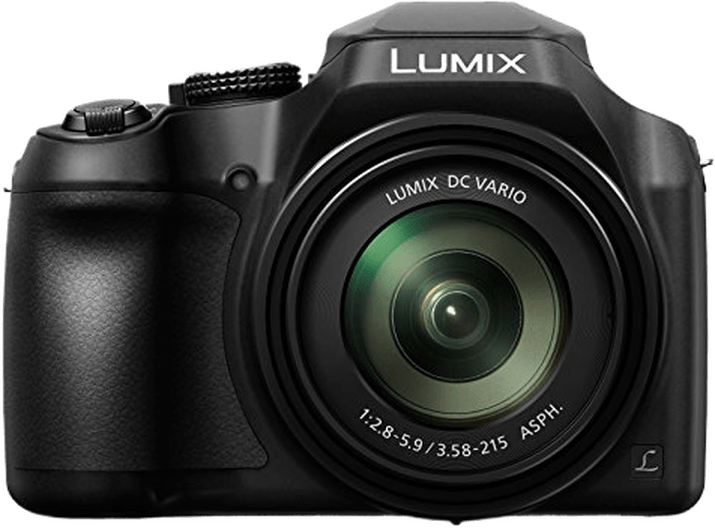
- Low price
- Built-in image stabilization
- Extensive 60x zoom range
- 1200 mm max focal length
- Easy touchscreen controls
- Sharp 4K video and photos
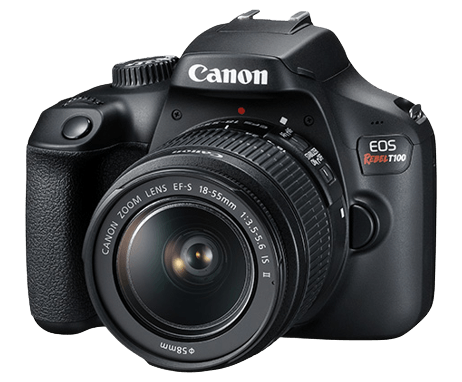
- Affordable
- Tracking AF system
- Beginner-friendly controls
- Lightweight and ergonomic body
- Wide range of compatible lenses
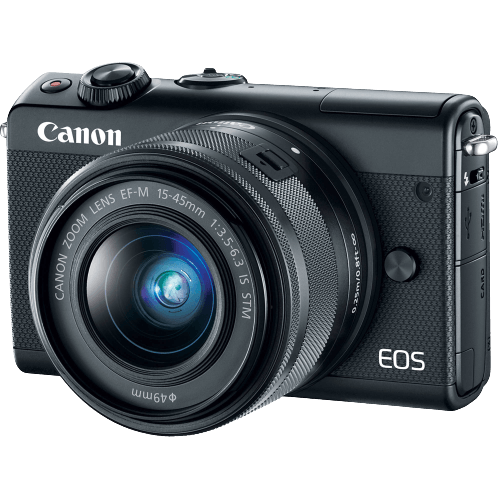
- Excellent 24 MP APS-C sensor
- Fast and accurate Dual Pixel AF
- Simple control layout
- Touchscreen for ease of use
- High max ISO of 25,600 for low light
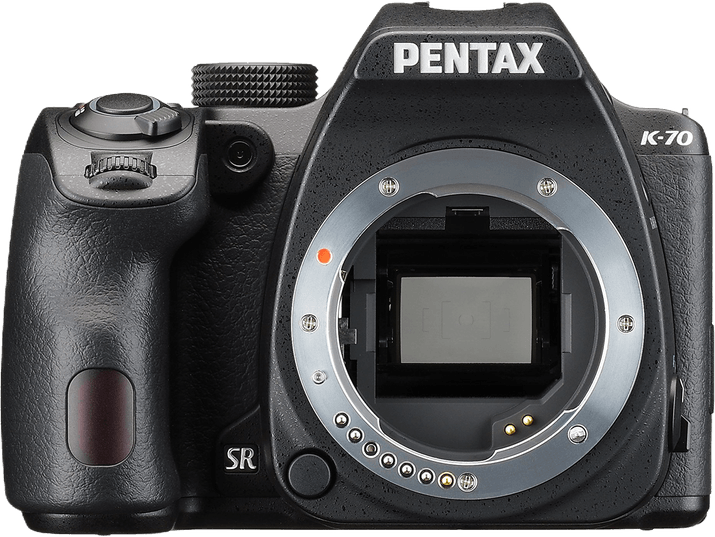
- Brilliant low-light performance with a wide ISO range
- Excellent image quality and sensor
- Built-in image stabilizer reduces camera shake
- High-quality pentaprism viewfinder
- Durable body with full weather sealing
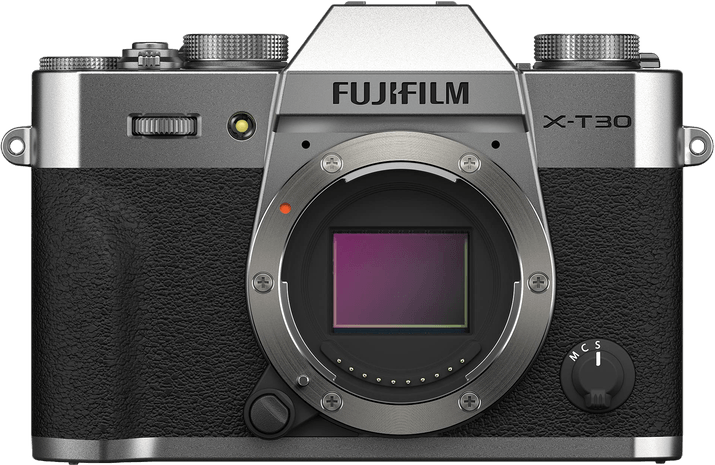
- Affordable
- High-quality images
- Fast 30 fps with 1.25x crop
- Small and light
- Stylish retro, black-and-silver look
13 Best Cameras for Amateur Photographers in Detail
It’s fair to say that none of these cameras will disappoint. But only if you choose carefully according to what you need. Let’s have a look!
1. Sony a6100

| Camera Type |
Camera Type
|
| Megapixels |
Megapixels
24 MP |
| Sensor Format |
Sensor Format
|
| Sensor Size |
Sensor Size
15.6 x 23.5 mm
|
| Frame Rate |
Frame Rate
11 fps |
| Autofocus Points |
Autofocus Points
425 |
- Great value for the price
- Eye-detect autofocus for humans and animals
- Compact size
- 4K video option
- Flip-out touchscreen for selfies and vlogging
- No in-body stabilization
- Low 1/4000 s max shutter speed
- No GPS
- Not weather-sealed
- No headphone jack
Sony’s a6000 was a well-respected camera. So much so that it is still available. It was upgraded with the a6100, and Sony has produced a great quality camera.
The APS-C sensor is 24 MP, and the Sony shoots 4K video at up to 30 fps. You can shoot 120 fps at 1080p. The ISO range has an impressive maximum of 32,000. And it can be pushed to 51,200. There is an EVF offset to the left. This augments the tilting LED touchscreen.
One area where the a6100 scores well is the autofocus. There are 425 points, using both contrast and phase detection. This results in fast, accurate focusing. It is especially good at locking onto and tracking faces. Even when continuous shooting at the impressive maximum of 11 fps.
There’s a lot of capability packed into a very compact camera. It’s mainly there as a point-and-shoot camera. But it is customizable enough to satisfy the amateur photographer looking for more control.
USB charging supports a camera with pretty decent battery life. There is no in-body IS. This is perhaps surprising in a camera that is clearly designed to appeal to video-minded amateurs. Still, overall this is a great camera in a very compact package.
2. Olympus OM-D E-M10 Mark IV

| Camera Type |
Camera Type
|
| Megapixels |
Megapixels
20 MP |
| Sensor Format |
Sensor Format
|
| Sensor Size |
Sensor Size
13 x 17.4 mm
|
| Frame Rate |
Frame Rate
15 fps |
| Autofocus Points |
Autofocus Points
121 |
- Affordable
- Very beginner-friendly
- Excellent image quality
- Built-in image stabilization for video and low light
- Endless list of compatible lenses
- Excellent 4K video features
- Small sensor
- AF has slow continuous shooting
- Contrast-detection AF system is slower than phase-detection systems
- No microphone and headphone jacks
- Plastic body and isn't weather sealed
The Olympus OM-D E-M10 Mark IV is a great entry-level mirrorless camera. It has a Micro Four Thirds sensor, so lenses are widely-available. It has a 20 MP sensor, 4K video, and up to 120 fps video.
In-body stabilization is a bonus for a camera that will very likely be used for video. The LCD screen is tiltable and locks at 45 and 90 degrees. It flips down for selfies. This presents problems if you want to use a tripod or selfie stick. If you plan to do a lot of vlogging with the camera on a tripod, this probably isn’t for you.
The 20 MP sensor provides good detail in captured images. Low-light performance is improved over the Mark III, and the LCD screen brightness can be boosted for better vision in low light. The electronic viewfinder (EV) is typical for this price point. It switches automatically according to whether you are looking through it or not.
The 4K video gives good results. Slow motion at up to 120 fps can be captured at 720p. There’s no audio at this speed. But to be honest, there are not many occasions when you want it. On the subject of sound, there are no jacks for audio in or out. This could also be a dealbreaker for amateur photographers majoring in video recording. This is a shame, as they would find the in-camera image stabilization a good selling point.
There is a USB port topping up the charge on-the-fly. Also, on the positive side, the camera accepts UHS-II SD cards. This makes the recording speed of large files much quicker.
Autofocus uses 121 focus points and is usually fast and accurate. It is, however, only contrast detection. This has its limits and results in occasional hunting.
The Olympus OM-D E-M10 Mark IV is a capable, compact, and relatively cheap mirrorless camera for amateur photographers. The kit lens gives decent image quality, and the Micro Four Thirds sensor has many lenses available. And if you’re at all sentimental, it looks great too!
3. Panasonic LUMIX DMC-G7

| Camera Type |
Camera Type
|
| Megapixels |
Megapixels
16 MP |
| Sensor Format |
Sensor Format
|
| Sensor Size |
Sensor Size
17.3 x 13 mm
|
| Frame Rate |
Frame Rate
7 fps |
| Autofocus Points |
Autofocus Points
49 |
- A fast and accurate autofocus
- Helpful focus peaking and zebra highlight warnings
- An external microphone input
- 4K stills mode
- Excellent 4K video and LCD resolution
- No phase-detection autofocus
- Low continuos burst of 7 fps
- No in-body image stabilization for camera shake
- Controls are a little over-complicated
- Short battery life with video recording
The Panasonic Lumix DMC-G7 is another Micro Four Thirds camera. It is an attractive proposition for amateur photographers. It offers overall good quality, with an appropriate blend of automation and manual settings. This means that you can rely on it for taking photographs easily. But if you want to take control of exposure settings or other factors, you can.
The image quality from its 16 MP sensor is good in both RAW and JPEG formats. 4K video is available. Although the autofocus has only 49 focus points and is contrast detect-based, it is generally fast and accurate.
The LCD screen is fully-articulated and touch-sensitive. So you can use it to access menus and select focus points. There is an electronic viewfinder and automatic switching of the screen or viewfinder.
One nice feature is the 4K stills mode. This allows you to grab images from just before you pressed the shutter button. If you’ve ever missed the vital moment at a sports game, then you might appreciate this.
Mirrorless cameras are notoriously power-hungry, and this Lumix can fall a little short when video recording. On the plus side, there is a microphone port if you want to attach an external mic.
Panasonic makes a large range of digital cameras for amateur photographers. The Lumix DMC-G7 has a blend of features that could make it the right choice for you.
4. Canon EOS Rebel T7i

| Camera Type |
Camera Type
|
| Megapixels |
Megapixels
24 MP |
| Sensor Format |
Sensor Format
|
| Sensor Size |
Sensor Size
14.9 x 22.3 mm
|
| Frame Rate |
Frame Rate
6 fps |
| Autofocus Points |
Autofocus Points
45 |
- Excellent image quality for APS-C
- Good 45-point AF tracking coverage
- Convenient touchscreen controls
- Wi-Fi and Bluetooth connectivity for easy uploads
- No 4K video, only 1080p
- No electronic viewfinder
- Slow 6 fps burst speed
- Only 95% viewfinder coverage
The Canon EOS Rebel T7i (880D outside the US) is an APS-C DSLR camera. As such, the sensor is physically bigger than a Micro Four Thirds camera. It has a 24 MP sensor with Dual Pixel CMOS Autofocus. This is the same technology used on Canon’s top cameras.
The Rebel T7i makes a good case for being one of the best cameras for amateur photographers. It has proper, serious features like Canon’s very useful Q button. This allows almost instant access to most of the important shot-by-shot features.
It also has some features not found on professional cameras, but which are useful nonetheless. Such as the fully-articulated LED touchscreen. With its EF-S lens mount, the Rebel T7i accepts all EF-S interchangeable lenses, as well as full frame Canon EF-mount lenses. This is useful if you think your hobby might get serious.
There’s no 4K video here, and 1080p is the best you’ll get. But you can record that size at up to 60 fps. There is a jack for an external mic, but no headphone socket. You can shoot stills at up to 6 fps. And if your memory card allows it, you’ll get no buffering with JPEGS. With RAW files, you’ll hit the buffers at about 21 shots.
As with all DSLR cameras, you see what you’re shooting. There’s no EV to worry about. And many of Canon’s consumer-level DSLR cameras actually do a better job with video than some of their “professional” cameras.
The EOS Rebel T7i is easy to pick up and take pictures with the Auto mode. But everything is there if you want to dive in and take control. If you’re learning photography, this your camera will grow with you.
5. Sony ZV-1

| Camera Type |
Camera Type
|
| Megapixels |
Megapixels
20 MP |
| Sensor Format |
Sensor Format
|
| Sensor Size |
Sensor Size
13.2 x 8.8 mm
|
| Frame Rate |
Frame Rate
24 fps |
| Autofocus Points |
Autofocus Points
315 |
- Compact body
- Excellent eye-recognition AF
- Rotating screen and viewfinder
- Has a forward directional mic
- Additional external mic port
- Poor image stabilization
- Disappointing battery life with video
- Fixed lens is not a wide-angle
- Not all Mac operating systems support webcam software
The Sony ZV-1 is a slightly different beast. Although it is clearly aimed at vloggers, it is also a very capable stills and hybrid camera. It’s well worth looking at as an amateur photographer. It could just be for the niche you’re looking for.
The Sony ZV-1 is not an interchangeable lens camera. So it comes with a full frame equivalent 24-70 mm zoom lens. It’s a very compact camera, and the penalty you pay there is that the sensor is only just bigger than half the size of a Micro Four Thirds camera. On the other hand, it’s ten times bigger than an iPhone sensor.
What Sony does with this sensor is pretty impressive. There are 20 megapixels on the CMOS sensor, and it can deliver 4K video. Smooth-looking 120 fps video is possible at 1080p. So the possibilities for your video recording are pretty wide.
There is in-camera image stabilization to help with image quality. And the better-than-usual microphone can be bypassed by using an external mic. An articulating screen allows for easy shooting. This feature is usually thought of as a video feature. But it can be tremendously useful when shooting stills.
USB charging, even when in use, is possible. And probably necessary as you’ll be lucky to get 300 shots from one battery. This definitely puts it in the realm of a camera for amateur photographers. Given that, on some photo shoots, I will typically take well in excess of 1,000 photos.
But the Sony ZV-1 is not pretending to be anything but a great digital camera suitable for amateur photographers. It delivers ease of use, too. The controls are unfussy and well laid out. This might not suit if you want to tweak the ISO to suit a specific scene. But not every amateur photographer wants to do that.
6. Canon EOS M50 Mark II
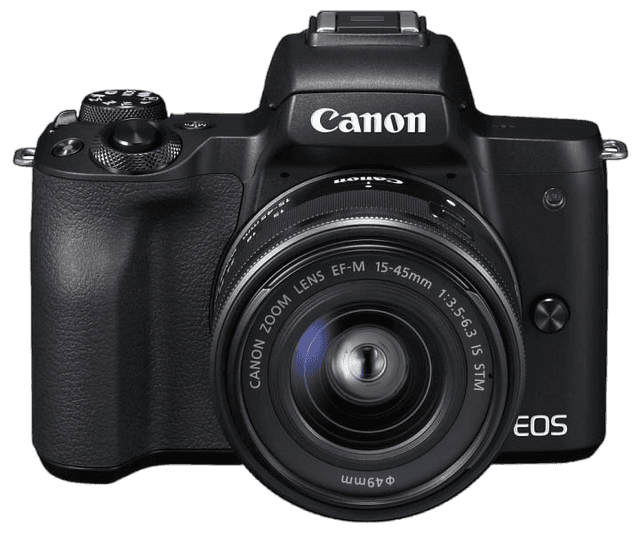
| Camera Type |
Camera Type
|
| Megapixels |
Megapixels
24 MP |
| Sensor Format |
Sensor Format
|
| Sensor Size |
Sensor Size
14.9 x 22.3 mm
|
| Frame Rate |
Frame Rate
10 fps |
| Autofocus Points |
Autofocus Points
143 |
- Strong image resolution
- 4K and Full HD video options
- Dual Pixel AF system for stills
- Wi-Fi, NFC, and Bluetooth connectivity
- Cropped 4K video
- No Dual Pixel AF for 4K
- Poor battery life
- Limited native lens range
Some mirrorless cameras look like DSLRs, some don’t. The Canon EOS M50 Mark II does. It has a central lump that contains the electronic viewfinder. It also has a fully articulating rear touchscreen.
Image quality relies on Canon’s 24 MP APS-C sensor. This is a tad bigger than other brands of APS-C sensors. The M50 Mark II has the Digic 8 image processor. This is just two iterations down from their flagship cameras. But it shares its Dual Pixel CMOS AF with the best of those cameras.
This gives fast and accurate autofocus, with eye and face tracking. Image stabilization is limited to what the lens can provide, or via sensor-cropping. This is somewhat limiting, as the 4K on the EOS M50 Mark II is already x1.55.
If you already have a keen YouTube following, the M50 allows you to stream YouTube videos live via Wi-Fi. Assuming a strong-enough signal. Other video-friendly features include the external mic input. The fully-articulating touchscreen is visible even in bright sunlight. This is another bonus, especially for videographers.
Battery life is better than the Sony ZV-1. But it is still only rated for about 300 shots. So even amateur photographers might need to consider carrying a spare battery. That’s always a wise choice, though.
The Canon EOS M50 Mark II impresses with its high ISO shooting. Even at 10,000 ISO you can get usable pictures. I mean really usable, not just tolerable. It’s a good halfway house between a DSLR camera and a more compact mirrorless digital camera.
7. Nikon D3500

| Camera Type |
Camera Type
|
| Megapixels |
Megapixels
24 MP |
| Sensor Format |
Sensor Format
|
| Sensor Size |
Sensor Size
15.6 x 23.5 mm
|
| Frame Rate |
Frame Rate
5 fps |
| Autofocus Points |
Autofocus Points
11 |
- Excellent image quality
- Guide mode for beginners
- Easy to use and wide functionality
- Long battery life
- No touchscreen
- No 4K video
- No Wi-Fi, only Bluetooth
- Screen does not rotate
The Nikon D3500 is a popular and very capable camera. It is an APS-C DSLR and one of the best cameras for amateur photographers. This is because it does all the essentials well. Even the included kit lens gives impressive image quality. As an entry-level camera, it’s a good value choice.
The controls are mainly as expected for a Nikon camera. Interestingly, with Canon DSLRs, the position of some buttons depends on if there is an articulating screen. If not, then there are buttons down the left. With the Nikon D3500, all the buttons fall under the right thumb. But the screen is fixed.
For some, the lack of a touchscreen might be a dealbreaker. It certainly feels like something that is lacking. Especially when other cameras deploy them so well. There’s a nice balance with this Nikon camera. It rests in the world of point-and-shoot cameras. But also the world of cameras for amateur photographers who are enthusiastic about their hobby.
There’s no external microphone socket and video is 1080p. So this is not likely to be your choice if video is your main thing. Autofocus is quick and reliable. Its 11-point system looks a little low these days. But you have to remember that at every price point, there are compromises to be made. And this is one of the cheapest cameras in this review.
Nikon lens compatibility is almost legendary, so it won’t be difficult to find additional lenses. These include used and third-party lenses.
8. Panasonic LUMIX GX85 (GX80)

| Camera Type |
Camera Type
|
| Megapixels |
Megapixels
16 MP |
| Sensor Format |
Sensor Format
|
| Sensor Size |
Sensor Size
13 x 17.3 mm
|
| Frame Rate |
Frame Rate
8 fps |
| Autofocus Points |
Autofocus Points
49 |
- Customizable face-detection autofocus
- Intelligent 5-axis image stabilization uses lens data for super-sharp images
- Programmed focus tracking via touchscreen
- Customizable on-screen buttons
- Excellent 4K video quality
- Poor 290-shot battery life
- Small buttons are fiddly and difficult for larger fingers
- Awkward strap lug location near shutter release
- No external mic or headphone ports
- 1.1x crop on 4K video recording
The Panasonic LUMIX GX85 (GX80 in the UK) is a good-looking compact digital camera. It has a Micro Four Thirds sensor and takes those interchangeable lenses. The touchscreen is tilting rather than fully articulating. So for selfie shooting, it flips up and appears over the top of the camera.
The EVF is offset to the left of the camera body. This might take getting used to. But it does free up the tilting touchscreen for controlling the camera while shooting. The 16 MP sensor achieves 4K video recording at up to 30p.
Panasonic also allows the rather nifty facility of capturing 8 MP stills in 4K, and capturing before you press the shutter. Continuous shooting speed is up to 6 fps, which is decent for such a compact camera.
Image stabilization is impressive. It has in-body IS. It also communicates with suitable IS lenses to produce the best result for a given circumstance. Obviously, this is restricted to lenses with IS and which are designed to work with the system. And the sensor-shift IS means there’s no image cropping involved.
Autofocus is reassuring and reliable. Continuous AF is available even while in continuous shooting mode. It has face detection and uses Panasonic’s contrast-detect Depth from Defocus (DFD) system. This involves understanding how specific lenses render out-of-focus areas. It only works with suitably-equipped Panasonic lenses.
9. Panasonic LUMIX DC-FZ80

| Camera Type |
Camera Type
|
| Megapixels |
Megapixels
18 MP |
| Sensor Format |
Sensor Format
|
| Sensor Size |
Sensor Size
6.17 x 4.55 mm
|
| Frame Rate |
Frame Rate
10 fps |
| Autofocus Points |
Autofocus Points
49 |
- Low price
- Built-in image stabilization
- Extensive 60x zoom range
- 1200 mm max focal length
- Easy touchscreen controls
- Sharp 4K video and photos
- Small sensor
- Noisy images at high ISOs
- No eye sensor on the improved EVF
- No articulating screen
- Weak battery life
If you want an extreme telephoto lens on a compact camera, then the Panasonic LUMIX DC-FZ80 could appeal to you as the best camera for your needs. It has a full frame equivalent 20-1200 mm zoom. That’s a lot of zoom. The price you pay is the f/5.9 at the longest length.
There is an 18.1 MP sensor with a respectable 49 focus points. And although this is pretty much a budget camera, it also uses Panasonic’s DFD autofocus system. It also has Touchpad AF, allowing the touchscreen to be used to select the AF point even when using the EVF. It also has a top shooting speed of 10 fps.
The maximum unboosted ISO of 3200 is a little modest by today’s standards. And it can only be boosted to 6400. Optical IS will help out in some circumstances. But the maximum aperture at longer zoom lengths is limited too. So you might struggle in demanding lighting situations.
Of course, this is a camera for amateur photography that does not pretend to be much more than a point-and-shoot camera. As such, it offers a lot of features for not so much money. And that could well put it on your list of the best cameras for your needs.
10. Canon EOS Rebel T100

| Camera Type |
Camera Type
|
| Megapixels |
Megapixels
18 MP |
| Sensor Format |
Sensor Format
|
| Sensor Size |
Sensor Size
14.9 x 22.3 mm
|
| Frame Rate |
Frame Rate
3 fps |
| Autofocus Points |
Autofocus Points
9 |
- Affordable
- Tracking AF system
- Beginner-friendly controls
- Lightweight and ergonomic body
- Wide range of compatible lenses
- Limited AF frame coverage
- Live View lags in low light
- Slow 3 fps burst speed
- Cheap plastic body
- Not weather sealed
The Canon EOS Rebel T100 is definitely targeted at the keen amateur photographer on a limited budget. The Rebel T100 boasts an 18 MP APS-C sensor. The AF has nine sensor points with a central cross type. The maximum ISO is 6400, although this can be pushed to 12,800.
The Rebel T100 has a perfectly respectable top shutter speed of 1/4000 s. This is way faster than the many professional SLRs I had in my youth. The maximum 30 s and Bulb setting also add to the camera’s amateur photography credentials.
Many amateur photographers like to take control of the elements of exposure. The Rebel T100 has easy control of all those elements. And it is a great introduction to how those things work on more sophisticated DSLRs.
For me, one of the most attractive features of the Canon EOS Rebel T100 is that it opens the door to one of the best camera families available. The number of interchangeable lenses for the Rebel T100 is almost limitless. It has many features of a professional camera. At least enough to satisfy many amateur photographers.
11. Canon EOS M100

| Camera Type |
Camera Type
|
| Megapixels |
Megapixels
24.2 MP |
| Sensor Format |
Sensor Format
|
| Sensor Size |
Sensor Size
14.9 x 22.3 mm
|
| Frame Rate |
Frame Rate
6.1 fps |
| Autofocus Points |
Autofocus Points
49 |
- Excellent 24 MP APS-C sensor
- Fast and accurate Dual Pixel AF
- Simple control layout
- Touchscreen for ease of use
- High max ISO of 25,600 for low light
- Not geared for action shots
- Some controls less easily accessible
- No USB charging
- Touchscreen only tilts
- No 4K video output
The Canon EOS M100 is perhaps starting to show its age. There’s no 4K video, for instance. But as a compact interchangeable lens mirrorless camera, it still has its strengths.
First of all, the 24 MP sensor in Canon’s APS-C format delivers great image quality. It uses the Dual Pixel AF technology found on all of Canon’s best cameras. The tilting touchscreen makes using the M100 a breeze.
There are fewer control dials and buttons than on Canon’s DSLRs. This means that camera settings are not as quickly available as on a DSLR. That reflects the compact nature of the camera. And it’s indicative of the target market for amateur cameras. That market will appreciate the 1/4000 top shutter speed.
The maximum ISO of 25,600 is another attractive feature. Especially as the APS-C format is larger and more forgiving of low light than smaller sensors. Exposure control is available via the various modes.
In a sense, the Canon EOS M100 is competing not just against other similar amateur cameras, but also against smartphones. And it’s in the world of Canon interchangeable lenses that the M100 defeats smartphone capabilities.
Are you looking for great image quality in a compact form? It’s worth putting the Canon EOS M100 on your list of best cameras for amateur photographers.
12. Pentax K-70

| Camera Type |
Camera Type
|
| Megapixels |
Megapixels
24 MP |
| Sensor Format |
Sensor Format
|
| Sensor Size |
Sensor Size
23.5 x 15.6 mm
|
| Frame Rate |
Frame Rate
6 fps |
| Autofocus Points |
Autofocus Points
11 |
- Brilliant low-light performance with a wide ISO range
- Excellent image quality and sensor
- Built-in image stabilizer reduces camera shake
- High-quality pentaprism viewfinder
- Durable body with full weather sealing
- Limited AF system for fast-moving subjects
- Slow buffering when shooting in RAW
- Slow max burst speed of 6 fps
- Poor connecting Wi-Fi app
- Only Full HD video, no 4K recording
The Pentax K-70 is an interesting proposition. It is among the cheaper items on this best camera for amateur photography review. But it has higher specifications than many.
It has environmental sealing against dust and splashes. These are more usual on a professional camera. If you’re interested in astrophotography, there are some things to interest you. The fully articulating touchscreen has a mode to make it more visible for sky photography.
The K-70 also has a maximum ISO of 102,400. Now, that is no guarantee of good low-light performance. Some high ISO sensors are effectively unusable at the top end. In use, the Pentax gives good low-light performance. Those high ISOs, though, on almost any camera, are for emergency use only.
You get sensor-based IS, called Shake Reduction (SR). This provides up to four stops of extra exposure latitude. And, of course, it works with every lens you use. But the SR system isn’t limited to keeping your hand steady.
The K-70 can move its sensor tiny amounts very quickly for IS. Pentax exploits this for their Pixel Shift Resolution mode. If you use a tripod, the camera takes four images in this mode. But it moves the sensor by one pixel each time. It then produces a composite photo. The end result is lower noise and better color resolution.
With features like continuous shooting up to 6 fps, the K-70 is a capable camera. For its low-light performance, it might be worth putting on your list. Pentax K-mount lenses are not as numerous as some other formats. But you should be able to find what you want.
The lack of a touchscreen and 4K video might mean it’s not the best camera for you. But it has some strengths to recommend it.
13. Fujifilm X-T30 Mark II

| Camera Type |
Camera Type
|
| Megapixels |
Megapixels
26 MP |
| Sensor Format |
Sensor Format
|
| Sensor Size |
Sensor Size
23.5 x 15.6 mm
|
| Frame Rate |
Frame Rate
30 fps |
| Autofocus Points |
Autofocus Points
425 |
- Affordable
- High-quality images
- Fast 30 fps with 1.25x crop
- Small and light
- Stylish retro, black-and-silver look
- No in-body stabilization
- Poor ergonomics with longer lenses
- Q button awkwardly positioned
- Rear screen is not fully articulated
If you yearn for the days when cameras were cameras, then take a look at the Fujifilm X-T30 Mark II. It has a visibly metal body and looks like SLRs of old. (Which is a good thing!)
But it’s not all about looks. The Fujifilm X-T30 Mark II boasts a 26 MP sensor with contrast-detect AF. Phase detect AF with 425 focus points and an eye-catching 1/32,000 s fastest shutter speed. At the other end of the scale, you can choose a 30-minute exposure.
The Fujifilm X-T30 Mark II is another camera that allows you to recover mistakes. You can set it to capture images before you press the shutter button. You can shoot 4K video at 30 fps and 120 fps at 1080p. For videographers, there’s a tilting LED screen and an external mic socket. The screen can’t face forwards, though. Sorry, selfie fans.
The EV is central, surrounded by solid-looking, knurled, engraved control buttons. It absolutely begs to be used in manual or semi-automatic modes. On the downside, the AF is not as good as we hoped, especially for tracking moving objects.
The image quality from this Fujifilm is impressive, all the way up to 12,800 ISO. Overall it’s a great contender. And the way it looks might just put a smile on your face. Even before you see the quality of its photos.
Our Verdict
Every professional photographer was once an amateur photographer. And the range of interests and subject matters are almost limitless. So your needs will be unique to you. If I were looking for a great camera to use on holiday, but not yet calling myself a “professional,” I’d choose the Sony a6100. I know that I could rely on it for excellent image quality. I also know it would have controllability if I want to manipulate the exposure. And it’s so compact.

Sony a6100
For those who think that their photography might get more serious, then the Canon Rebel T100 is a great pick. The same is true of the Nikon D3500, but it opens the door to the Nikon world instead. And finally, for something compact and mirrorless, then give the Panasonic LUMIX DC-FZ80 a look.
Camera Buying Guide for Amateur Photographers
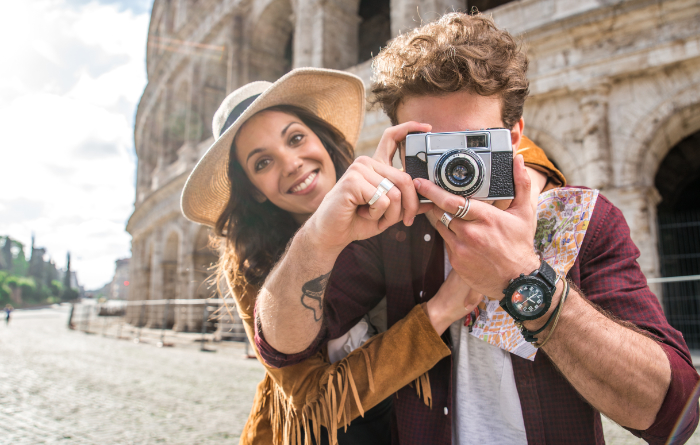
What are your priorities?
This will determine many of your choices. You’ll see from this review that some cameras excel at video recording. If that’s important to you, make it a priority. All these cameras feature built-in Wi-Fi. Other cameras have GPS and Near Field Communication (NFC). How much you want to use these features will have an impact on your choice.
Features to Look Out For
- Connectivity: Look for built-in Wi-Fi, USB, HDMI, Bluetooth, and NFC.
- Expandability: Hot shoe for flash, microphone, and earphone sockets.
- Lens Availability: Interchangeable mounts have different levels of lens availability.
- 4K Video: This is pretty much standard now. But beware that on some cameras, the image will be cropped. The smaller the sensor, the more serious this is. It also cuts down on how wide your wide-angle lenses are.
- Size: Some of these cameras are so compact you will literally carry any and everywhere. They are so compact.
Final Thoughts
That unique set of needs and wishes that you have? That makes choosing a camera exciting. It’s a golden age, really. All of these cameras deliver performance that was undreamed of when I bought my first digital camera 15 years ago.
Choose the camera that doesn’t just meet your needs. But maybe it excites you a bit too. Because of the way it looks or how it handles. Or you might have a particular liking for the way a particular camera manufacturer processes JPEGs. If you love how Sony photos look straight out of the camera, that’s a bonus.
Photography is a wonderful, creative, and enjoyable hobby. Find the camera that excites you the most. If you’re in need of some more inspiration, try our guide on beginner Sony cameras or the best cameras for jewelry photography next!


